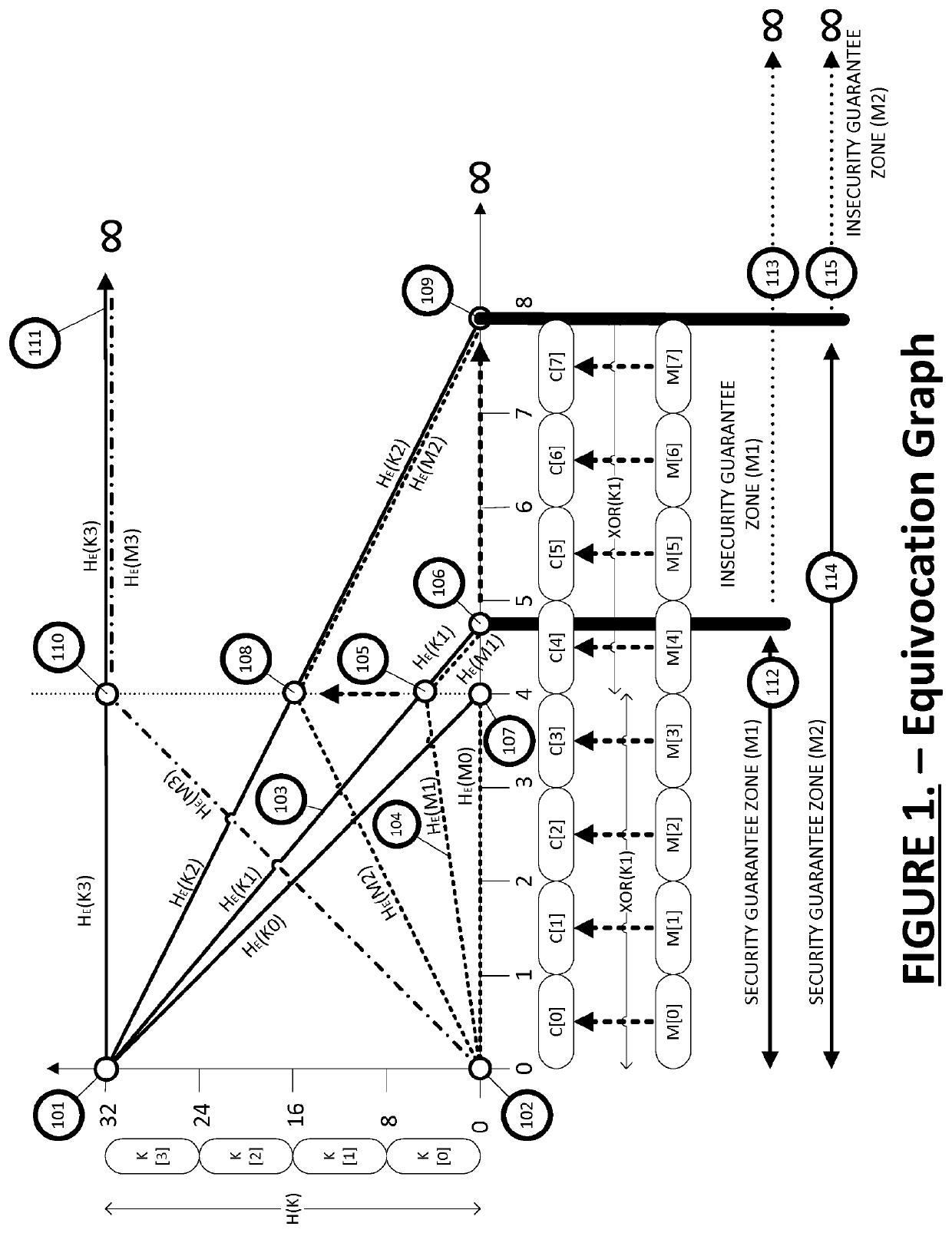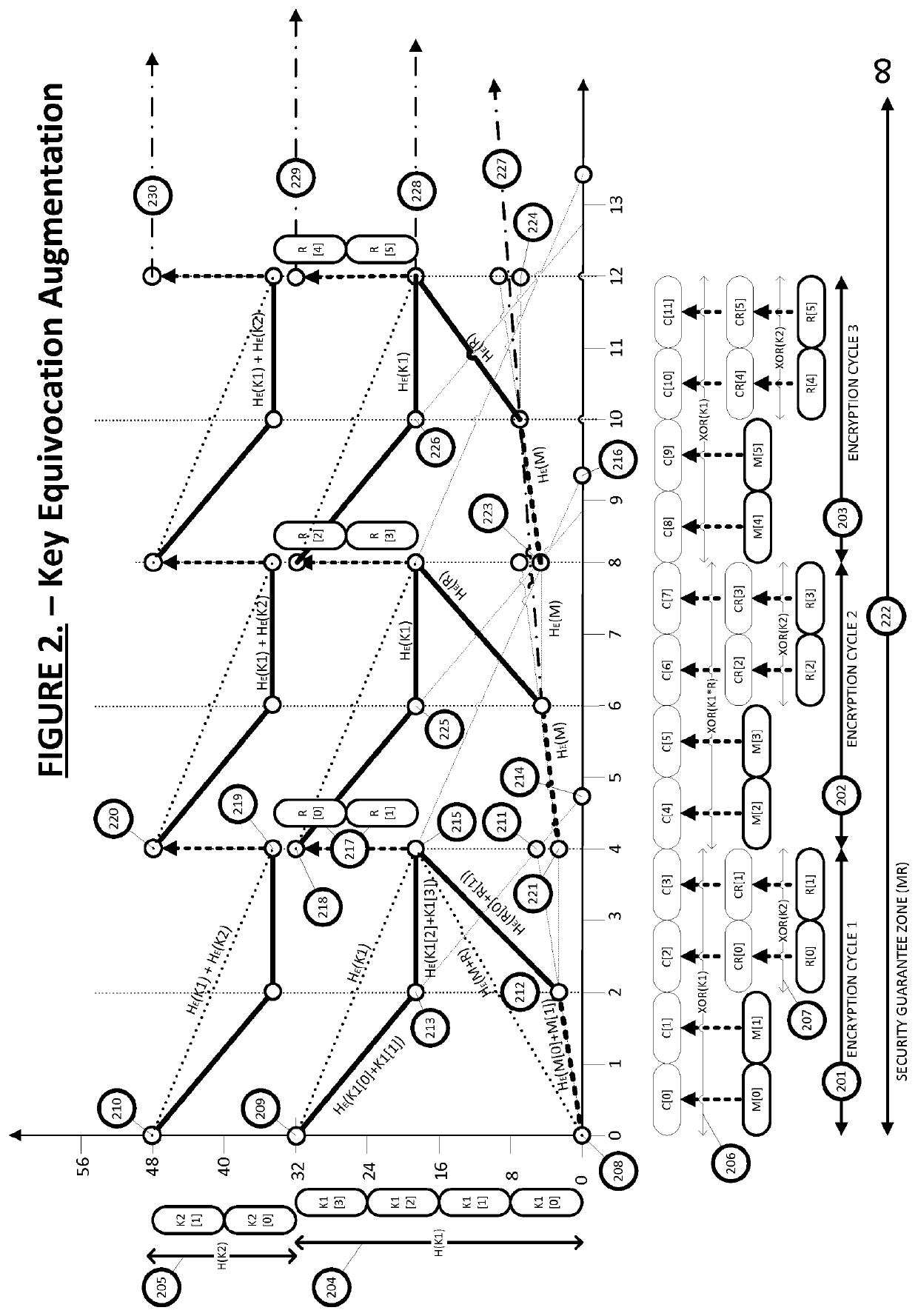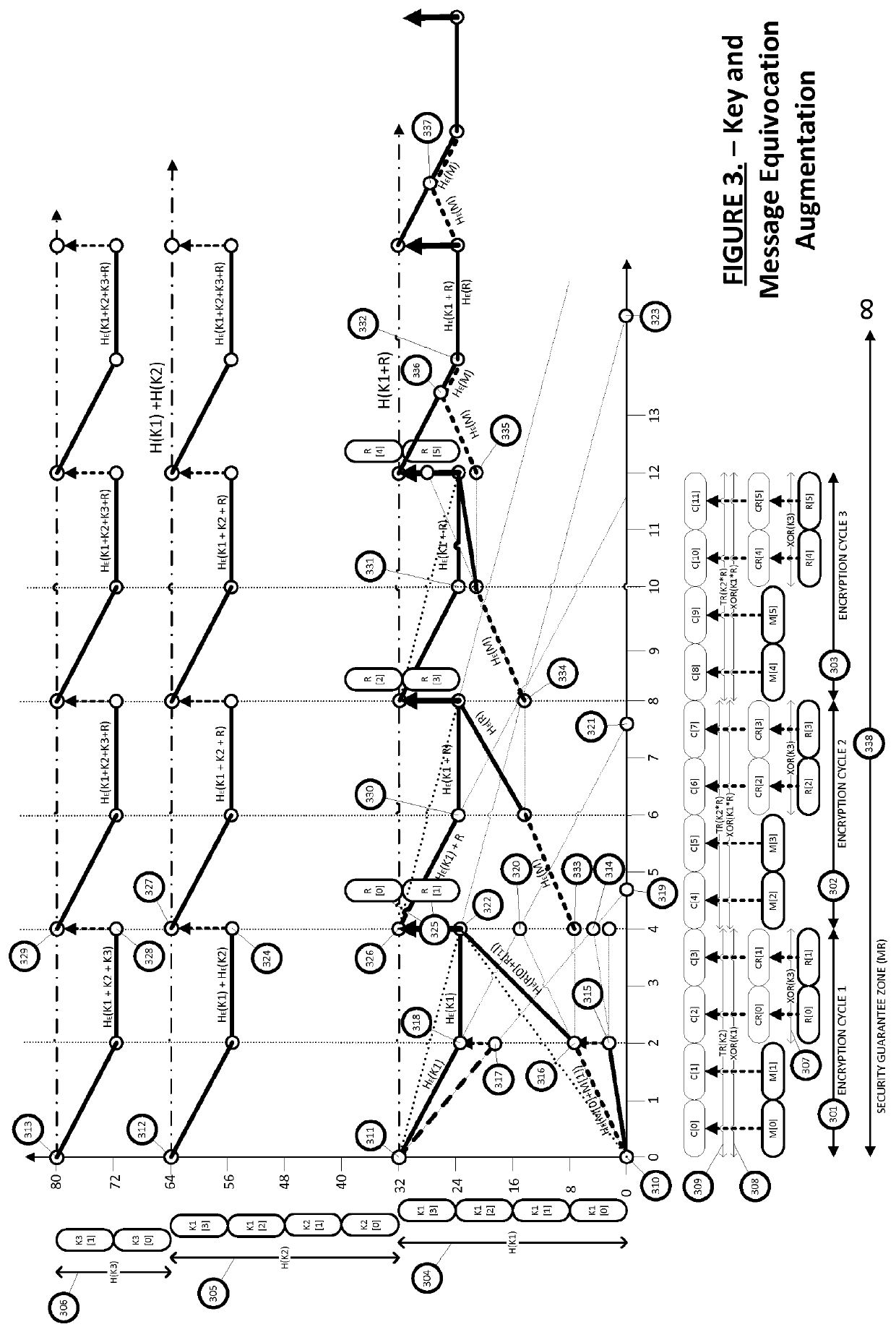Equivocation Augmentation Dynamic Secrecy System
- Summary
- Abstract
- Description
- Claims
- Application Information
AI Technical Summary
Benefits of technology
Problems solved by technology
Method used
Image
Examples
Embodiment Construction
Terms and Definitions
[0051]In this document, the term “sender” or “encryptor” is used to indicate a party, entity or system which performs encryption of a message into ciphertext and “receiver” or “decryptor” is used to indicate a party, entity or system which performs decryption on a ciphertext to extract the message. “Sender” and “receiver” are primarily used with descriptions entailing encryption operations which require transmission (encryption in transit), whilst “encryptor” and “decryptor” relate to encryption operations with regards to data at rest. The parties mentioned above may be any system, machine, network, data or real person entity using an embodiment of the present invention.
[0052]As used herein, the phrases “secrecy system”, “security system”, “cryptosystem” or “cipher” may be used interchangeably and may refer to any system, algorithm, cipher, or a physical or logical component or element of a cryptographic system, entity or cryptographic primitive that uses, inter...
PUM
 Login to View More
Login to View More Abstract
Description
Claims
Application Information
 Login to View More
Login to View More - Generate Ideas
- Intellectual Property
- Life Sciences
- Materials
- Tech Scout
- Unparalleled Data Quality
- Higher Quality Content
- 60% Fewer Hallucinations
Browse by: Latest US Patents, China's latest patents, Technical Efficacy Thesaurus, Application Domain, Technology Topic, Popular Technical Reports.
© 2025 PatSnap. All rights reserved.Legal|Privacy policy|Modern Slavery Act Transparency Statement|Sitemap|About US| Contact US: help@patsnap.com



